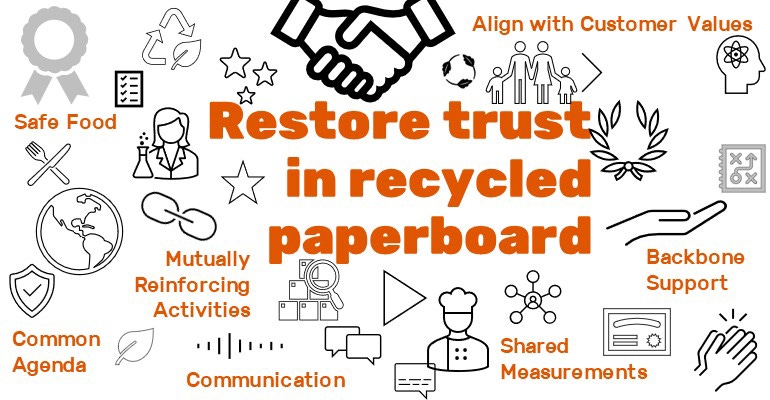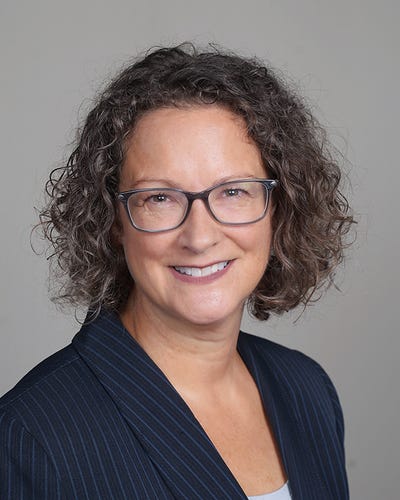Is Recycled Paperboard Safe for Food Use?
Chemicals of concern like PFAS have eroded consumer trust in using recycled paperboard for direct food contact packaging. Here’s how to get it back.

Trust in the use of recycled paperboard for direct food contact packaging has faltered. Consider chemicals of concern, whereby consumer familiarity is growing fo terms such as PFAS, the acronym for per- and polyfluoroalkyl substances. As more chemicals that are present in recycled paperboard are identified as health and environmental issues and as legislation expands, trust will continue to erode.
We can restore trust in recycled paperboard by aligning with consumer values using three Value Chain elements:
1. Focus on a common agenda and shared measurements for recycled paperboard.
The Value Chain comes into action by connecting what consumers need — safe food — to how this can be achieved through recycling facilities, packaging suppliers, brands, and retailers all collaborating to create a common agenda. Advances toward uniform determinations of migration, high efficacy of removing chemicals of concern in paperboard, and the assurances of the safety of alternatives are needed. Clearly there are gaps that need to be filled.
In terms of measurements, harmonization is needed. For example, current and pending conflicting state legislation bans related to PFAS include both compounds with 1 or 2 fluorine atoms bonded to carbon and define “no-PFAS” to mean less than 100ppm.
Currently, California Proposition 65 safe harbor limits do not yet exist for PFAS and thus any level of PFAS is “banned” even if below 100ppm. Since Proposition 65 allows for separate liability for all supply chain entities, the entire supply chain is liable if PFAS exists.
Unfortunately, the lack of consistency gets worse. The TPCH Model legislation for toxins requires the elimination of intentionally added PFAS, including PFAS that do not migrate into food and remains in the package. This creates contradictions on how companies should react to PFAS. However, there is hope: the FDA Closer to Zero concept used for lead reduction may be extended to chemicals of concern and the actual migration limits from paperboard are being reassessed by migration through paper-based packaging materials (MigPAP).
The Packaging Value Chain plays a critical role in addressing PFAS and other chemicals of concern. For example, transparent Standard Operating Procedures (SOPs) to measure chemicals of concern and incorporate testing protocols in the entire value chain are critical to prove compliance, regardless of the regulation. For recycled paperboard to regain consumer trust, consistent shared regulations and enforcement are needed.
2. Engage in mutually reinforcing activities for recycled paperboard.
Engage in mutually reinforcing activities can be used to lower costs, focus on testing, and allow each value chain entity to add value via the controlled use or removal of chemicals of concern.
For example, the Recycled Paperboard Technical Association (RPTA) manages the added chemical testing and then certifies that the recycled fiber is safe for food contact. The “safe for food” status is conveyed up the value chain to packaging converters and brands requiring food contact recycled paperboard.
Interestingly, this assessment of the migration of chemicals of concern from the recycled content board into food aligns with the FDA while recent PFAS state legislation does not consider migration and focuses on entire environmental impact and bans PFAs and other chemicals of concern from food packaging entirely. Other entities in the value chain such as recycling facilities can add value by guiding paperboard design formats, inks, coatings to ensure that chemicals of concern are not present in the recycled paperboard.
3. Provide constant communication and “backbone support” for recycled paperboard.
These two strategies foster open communication among all stakeholders in the Packaging Value Chain and is a way to ensure progress on rebuilding trust is being made. This includes exchanging research and resources on chemicals of concern within recycled paperboard. Risk assessments add structure to communication and help determine the level of backbone support needed.
Co-author Mira Sachan recently completed her MS thesis related to this topic at Cal Poly. You can reach her at [email protected]
Co-author Claire Sand has 30+ years of experience in industry and academia. She’s owner of Packaging Technology and Research and Gazelle Mobile Packaging and an Adjunct Professor, CalPoly, Michigan State University, and the University of Minnesota. You can reach her at reach her at www.packagingtechnologyandresearch.com or [email protected].
About the Author(s)
You May Also Like






